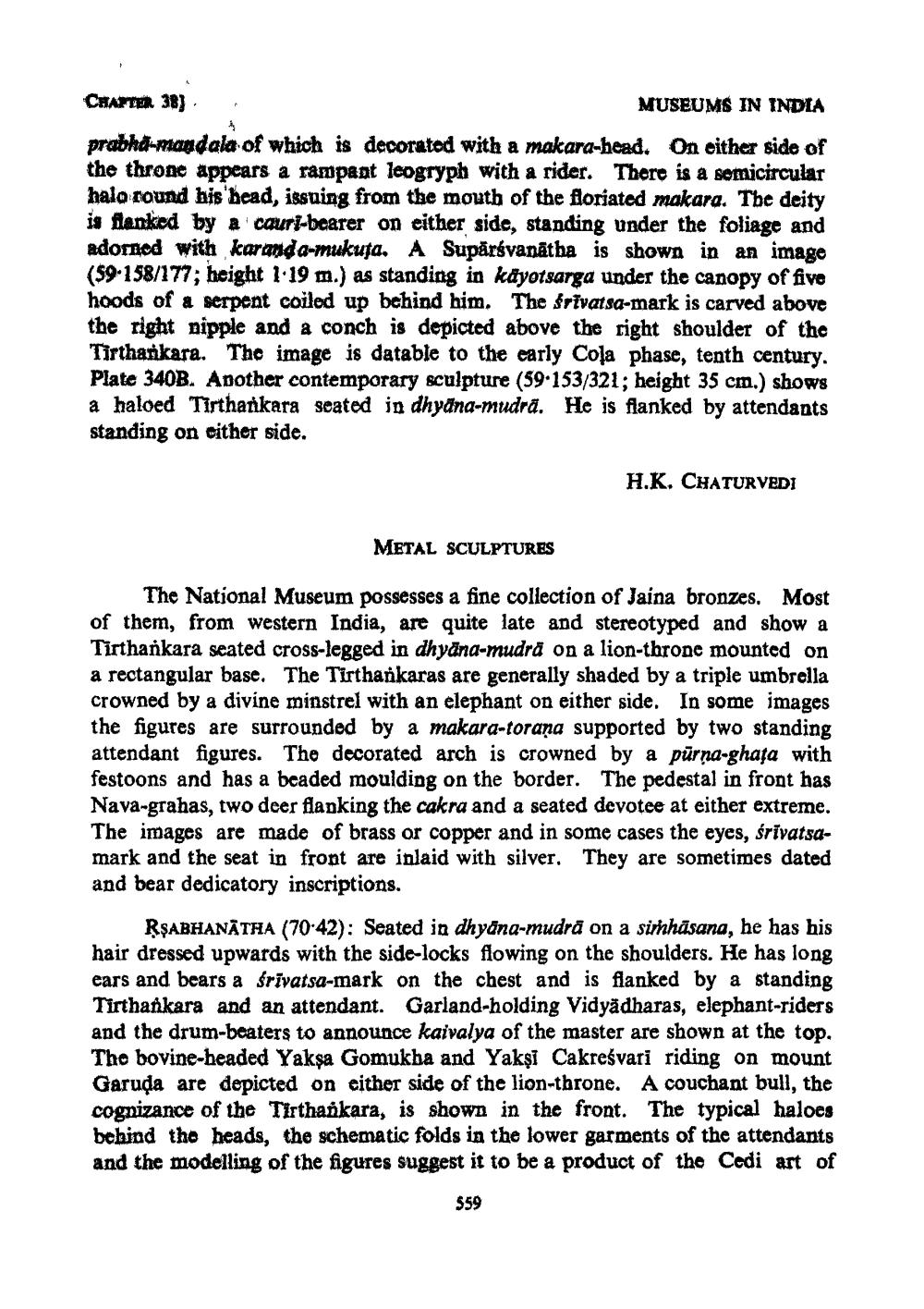________________
CHAPTER 38)
MUSEUMS IN INDIA
prabha-mandala of which is decoratod with a makara-head. On either side of the throne appears a rampant leogryph with a rider. There is a semicircular halo round his head, issuing from the mouth of the floriated makara. The deity is flanked by a cauri-bearer on either side, standing under the foliage and adorned with karanda-mukuta. A Supārsvanātha is shown in an image (59-158/177; height 1.19 m.) as standing in käyotsarga under the canopy of five hoods of a serpent coiled up behind him. The frivatsa-mark is carved above the right nipple and a conch is depicted above the right shoulder of the Tirthankara. The image is datable to the early Cola phase, tenth century. Plate 340B. Apother contemporary sculpture (59.153/321; height 35 cm.) shows a haloed Tirthankara seated in dhyana-mudra. He is flanked by attendants standing on either side.
H.K. CHATURVEDI
METAL SCULPTURES
The National Museum possesses a fine collection of Jaina bronzes. Most of them, from western India, are quite late and stereotyped and show a Tirtharkara seated cross-legged in dhyāna-mudrä on a lion-throne mounted on a rectangular base. The Titharkaras are generally shaded by a triple umbrella crowned by a divine minstrel with an elephant on either side. In some images the figures are surrounded by a makara-torana supported by two standing attendant figures. The decorated arch is crowned by a pürna-ghafa with festoons and has a beaded moulding on the border. The pedestal in front has Nava-grahas, two deer flanking the cakra and a seated devotee at either extreme. The images are made of brass or copper and in some cases the eyes, srivatsamark and the seat in front are inlaid with silver. They are sometimes dated and bear dedicatory inscriptions.
RŞABHANATHA (70-42): Seated in dhyāna-mudrā on a siṁhäsana, he has his hair dressed upwards with the side-locks flowing on the shoulders. He has long ears and bears a srivatsa-mark on the chest and is flanked by a standing Tirthankara and an attendant. Garland-holding Vidyadharas, elephant-riders and the drum-beaters to announce kaivalya of the master are shown at the top. The bovine-headed Yaksa Gomukha and Yakşi Cakreśvari riding on mount Garuda are depicted on either side of the lion-throne. A couchant bull, the cognizance of the Tirthankara, is shown in the front. The typical halocs behind the heads, the schematic folds in the lower garments of the attendants and the modelling of the figures suggest it to be a product of the Cedi art of
559




